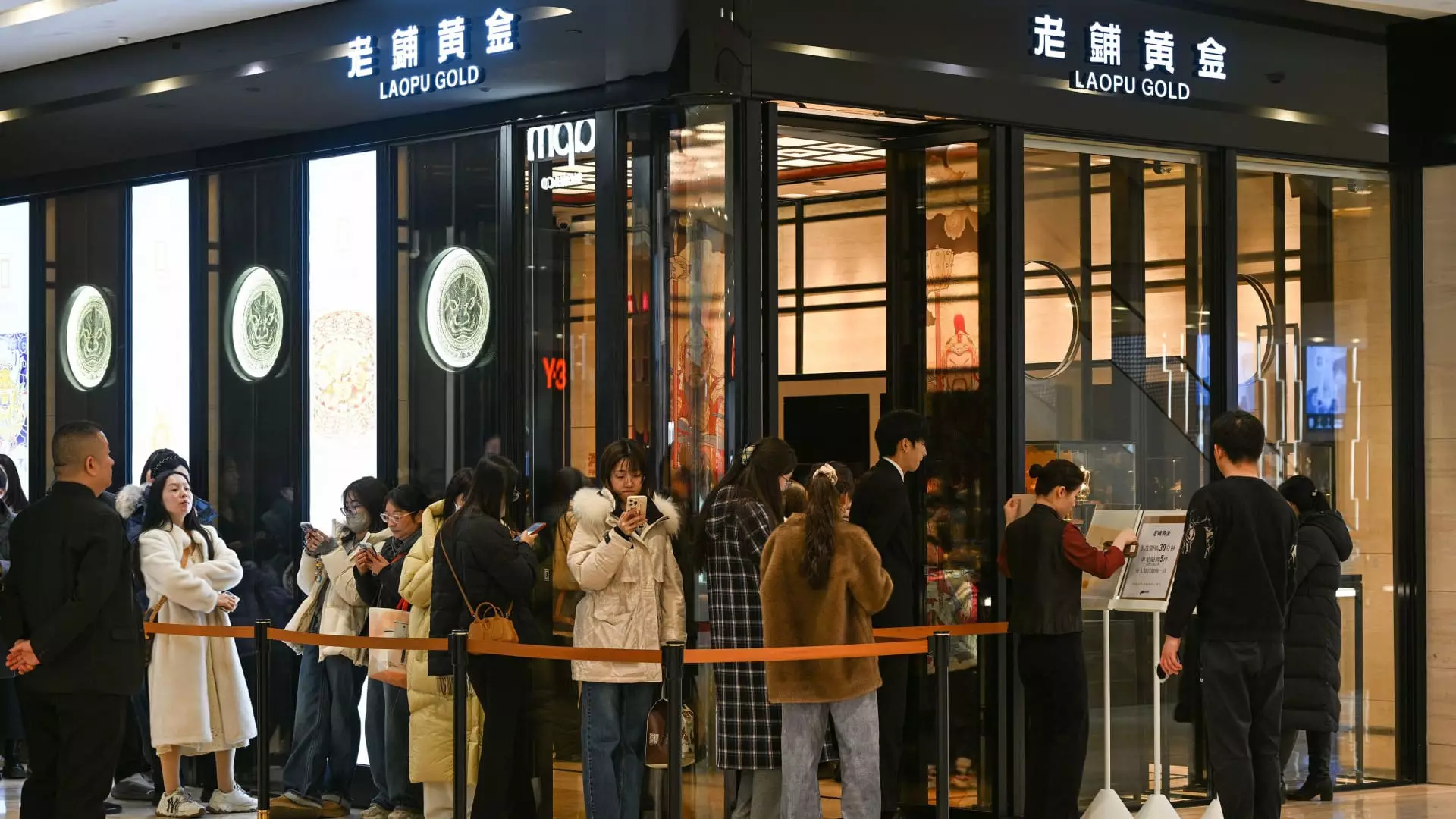The recent earnings reports from various Chinese companies paint a nuanced picture of the nation’s consumer spending trends. While there has been a noticeable uptick in retail revenue for major e-commerce players like Alibaba and JD.com, the broader landscape shows that consumer spending hasn’t fully bounced back to its pre-pandemic vigor. Charlie Chen, a key analyst from China Renaissance Securities, presents a cautious optimism that portrays the recovery as healthy yet incomplete.
The realities of how consumers perceive their wealth are still clouded by significant economic factors, particularly the persistent decline in the real estate market. For any substantial recovery in consumer spending, double-digit revenue growth seems to be a crucial threshold. This demand for a robust growth indicator suggests that while recovery efforts are underway, they lack the oomph necessary to inspire widespread confidence among consumers. As sentiments around economic stability continue to waver, it becomes apparent that merely increasing revenues even slightly isn’t sufficient; they must meet or exceed pre-pandemic expectations to evoke the desired return of consumer confidence.
Government Initiatives: A Double-Edged Sword
Chinese policymakers have eagerly pursued strategies aimed at buttressing consumer spending, identifying it as a top priority in their economic agenda. They have commendably expanded incentive programs targeting tech purchases, including smartphones, invoking a shift in focus toward bolstering consumer electronics sales. Such initiatives illustrate a government willing to intervene generously, yet one must scrutinize the efficacy of these measures. JD.com’s recent sales growth, spurred by these subsidies, could be viewed as a temporary relief, rather than a stabilizing force in consumer behavior.
Moreover, the lived experience of the average Chinese consumer often contrasts with anticipated economic momentum. Analysts like Sandy Xu of JD.com express a long-term optimism rooted in improved consumer sentiment; however, critical voices may argue such assertions are too optimistic. Economic policies aimed at reviving spending might not yield lasting results if they do not effectively address deeper issues plaguing consumer confidence, such as job security and stagnant wages.
Finding Niche Successes Amidst the Gloom
In a landscape where many sectors are grappling with reduced sales, a few companies are demonstrating remarkable resilience by honing in on niche markets. Laopu Gold, a local jewel maker specializing in culturally significant designs, anticipated a jaw-dropping 236% increase in profit. Likewise, companies such as Toy company Pop Mart have managed to effectively double their revenues, highlighting a significant disparity in performance across different sectors.
This divergence presents a stark reality; while some companies thrive, the overall market remains shrouded in uncertainty. The success of businesses like Laopu Gold is a testament to the potential power of cultural relevance in consumer goods. In an economy otherwise fettered by sluggish spending, they are reminding us that meaningful connections with local consumers can yield impressive results. However, this raises a broader question—are such triumphs mere outliers or indicative of a significant dynamic shift in consumer preferences?
Challenges Lurking in the Competitive Arena
As China continues to position itself as the world’s second-largest consumer market, the atmosphere is one of cutthroat competition. Retailers are simultaneously grappling with adjusting to the realities of oversupply and declines in cost-driven pricing wars fueled by online discounts. Traditional retail chains like Miniso illustrate this struggle, showing growth but tempered by the changing landscape of consumer shopping habits.
Even established names like Starbucks are not spared from this competitive plight; their reported sales declines are alarming signals that indicate deeper consumer anxieties and a frail recovery. It is evident that the market is fundamentally shifting, whereby consumer goods go through unprecedented evaluations of worth and value. The fallout is not merely constrained to sales figures but reflects a broader cultural shift as consumers demand higher quality and authenticity from brands.
Future Projections: What Lies Ahead?
As analysts ponder potential paths forward, questions loom about the sustainability of growth in China’s consumer market amidst economic challenges. Chen’s projections regarding retail sales indicating a potential increase reflect cautious expectations. Yet, it is pivotal to recognize that these predictions ride on a precipice where a macroeconomic downturn could easily disrupt any optimistic trajectory.
Consumer discretionary spending seems to hold promise, suggesting that future efforts might best be channeled into services and experiences rather than mere product purchases. The recent surge of interest in international travel, for instance, signals towards exploring potential sectors ripe for disruption and investment.
In this intricate matrix of market revival efforts, nuanced consumer sentiment, and evolving competition, one thing becomes clear: the road to recovery will require a delicate balance of innovative policy responses and genuine engagement with the consumer base. As the narrative unfolds, the coming months will reveal whether these insights translate into meaningful change or if they serve merely as invented optimism in an uncertain landscape.

